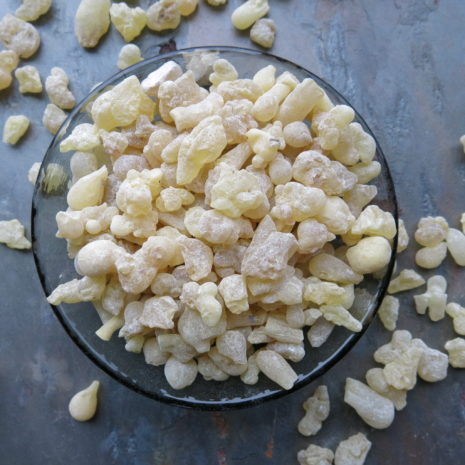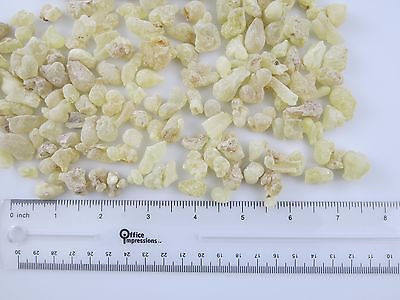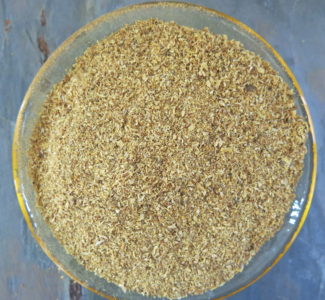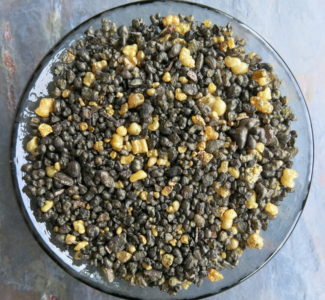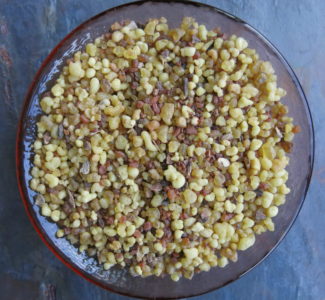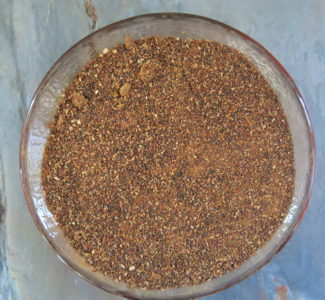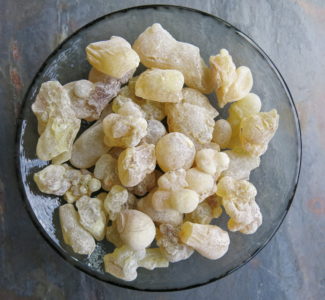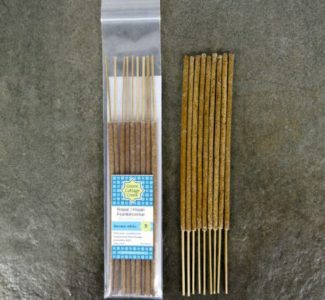Description
Royal Hojari
Frankincense Resin Tears
Boswellia sacra
100% pure, natural tree resin
wild collected in Oman
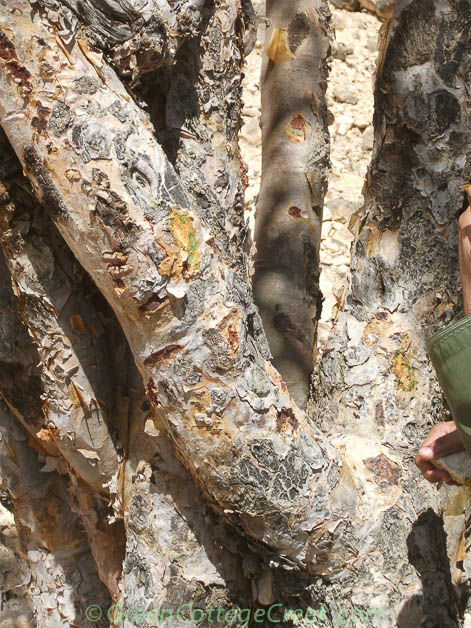
The Frankincense tree is a succulant tree, native to Arabia and Africa, where it grows in isolated stands in the desert.
It is a member of the Burseraceae plant family, together with it’s incense tree relatives Myrrh (Commiphora myrrha), and Palo Santo (Bursera graveolens).
Where the tree bark is cracked, aromatic resin bleeds out of the tree, and dries while still on the bark.
During the process resin and tree bark seal together, and produce Frankincense tears.
There are many different grades of Frankincense resin available on the commercial market, and they are priced accordingly.
The determining factors are cut size of the material, aroma, color and country of Origin.
Omani Royal Hojari Frankincense is considered the most precious kind.
It is harvested in Sallalah, Dhofar a region famed for it’s superb production of Frankincense.
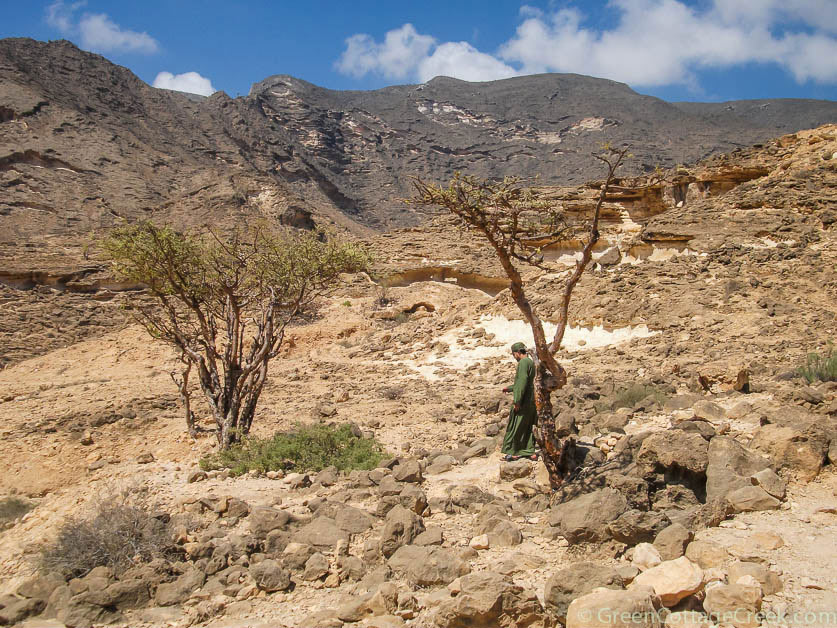
******************************
Frankincense does not grow in cultivation, and is always harvested from isolated, wild plant stands, making this a highly valued, precious botanical raw material.
| Demand exceeds supply: Please use conscientiously |
When exposed to heat, Frankincense releases an aroma which creates a sacred environment during religious ceremonies.
It facilitates meditation as it cleanses the entrance to the spiritual realm, and has been used by many different cultures throughout history.
The warm, balsamic, pleasant aroma of Frankincense is reputed to relieve stress and tension, to repel insects, alleviate depression, and to deodorize a room.
It has been traded in North Africa for over 5000 years.
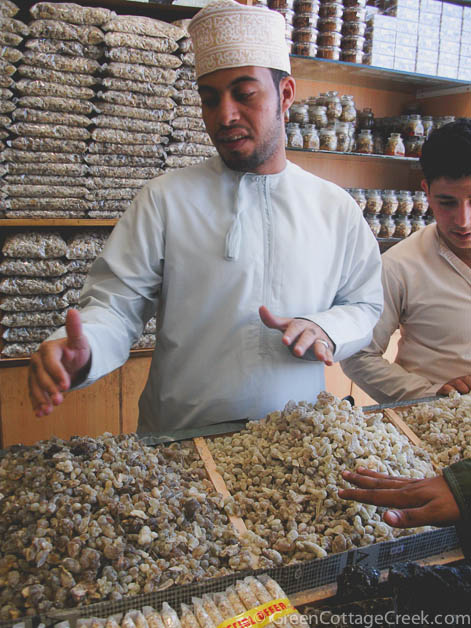
******************************
To burn the sacred incense, fill a fire proof vessel with sand. A metal or soapstone bowl is preferable.
Light a quick-light charcoal tablet by holding it over a candle flame with a pair of tongs. This is best done outside, or in a well ventilated area such an near an open window, as the charcoal is treated with lighter fluid, which exudes fumes during the lightening process.
Once enough amber glow has developed, place burning charcoal onto sand bed and fan until charcoal is fully light. A large feather is a traditional fanning tool, but any other fanning method will suffice. Use tongs to place incense onto burning charcoal.
Never leave burning charcoal, resin or candle unattended. Keep vessel on fire proof surface during the incense burning ritual. Use sand to extinguish the charcoal or burning resin.
Do not throw incense into fireplace/wood burning stove, as the precious, fragrant smoke will escape unnoticed together with the wood smoke. Do not use BBQ charcoal for incense burning.
